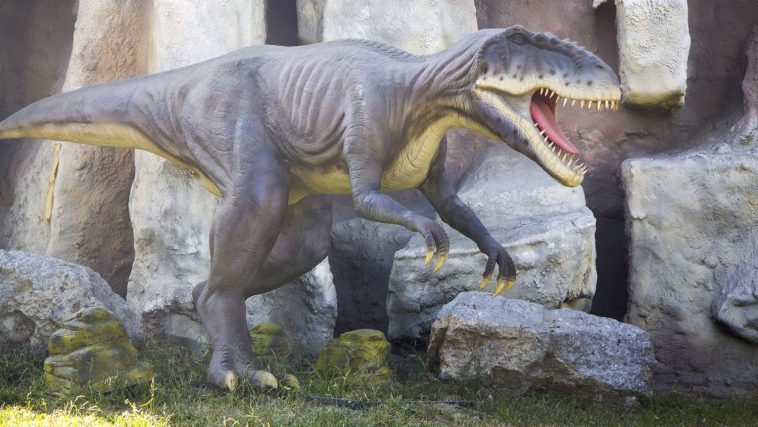[Originally published as part of The Philosophy of Creation Science]. See Part 1 HERE]
Young-earth creationists are interested in science because we want to better understand the Creator’s world in light of His Word. However, science is an ongoing enterprise, and new data is turning up all the time. Often, this data falls right in line with our expectations based on a young-earth perspective. Sometimes we can explain it better than our old-earth colleagues! Other times, the data is harder to explain from within a young-earth context. Just what do creationist researchers do with incoming data?
Failure is success in progress. ~Albert Einstein
The vapor canopy model is one example that shows how creation science changes over time. There will always be a disparity between our current understanding of the world and the new information we discover daily. This reality is what fuels the pursuit of the scientific endeavor: the desire to resolve the dissonance between what we believe to be true in our minds and what is true to our sensory perceptions. Although our models may be based on the infallible Word of God, they can still be inaccurate or completely wrong. This doesn’t mean that the Bible itself is wrong, just that the way our model uses or interprets it is.
But how do we determine validity within a scientific model, even if the model is ultimately wrong? Just because a scientific model is wrong does not mean it is useless or a failure. The history of science is riddled with scientific models that, while incorrect, helped scientists to explain available data, propose testable hypotheses, and even make successful predictions later. This is a hallmark of a good scientific model.
Therefore, the fact that a particular scientific model cannot explain all the data does not mean we should toss it out or change our minds about the model as a whole. It may be more likely that the scientist(s) has the right idea and is moving in a good direction, meaning that the model is partially correct. More research is required to differentiate the parts of the model that are correct from the parts which are not.
When Creationists Disagree
There is disagreement amongst creation scientists as to whether some dinosaurs, like the Deinonychus above, were covered in feathers.
As we study the world, it is quite likely that we will find significant points of scientific disagreement even with brothers and sisters in the Lord. Young-earth creationists hold conflicting views on many topics including the placement of the Flood boundary, the usefulness of statistical baraminology, whether feathered dinosaurs existed, if australopithecines were bipedal, etc. The Bible lays the basis for our understanding of these topics, but it does not direct us toward specific scientific conclusions.
Creationists can study the same evidence, and come to separate opinions. That’s okay. We are all exploring different options that could lead us to the objective truth of God’s creation. This doesn’t mean that either side is dishonest or disingenuous.
God calls us as Christians to be honest, rigorous, and empirical. In science, this means that we need to perform experiments, make models, and test them against Scripture and the natural world. The Bible should shape the way in which we interact with fellow scientists, Christian and non-christian alike.
Courage and Humility
When disputes arise between creationists, it is important to remember that character is as important as correct interpretation. Being “right” about an issue means nothing if we sacrifice or undervalue our character and virtue.
The first step towards respectful disagreement is to admit that we might be mistaken. This takes a significant amount of intellectual courage and humility. Time has proven that gospel-believing Christians can (and have) misunderstood or misinterpreted the Scriptures. Before we begin discussing controversial topics, we need to accept that we are like those Christians. This is difficult to do, especially when we firmly believe we are in the right about something as meaningful as Scripture. But all human interpretation of Scripture is fallible. If we are to expect others to critically evaluate their position, we must be willing to do the same.
Intellectual Tenacity
Of course, we should not treat everything as mere interpretations. We should not consider the resurrection of Jesus as one possible exegesis of Scripture we may have misunderstood. The gospel is not up for debate. As we learn from those we disagree with, and even pursue scientific and biblical truth alongside them, we must remain firm in truth. This takes intellectual tenacity. Without tenacity, our courage and curiosity can lead us away from our convictions of the truth.
Galileo was tenacious when he continued to advocate for theories that were condemned by the Aristotelians. Intellectual tenacity can be just as difficult as humility and fair-mindedness, especially if everyone around you seems to disagree. But it is also just as necessary. As G.K. Chesterton once famously remarked, “Do not be so open-minded that your brains fall out.”
We must have the integrity and faith to follow the evidence, be willing to have our ideas challenged, and consider possible alternatives where Scripture allows us the freedom to do so. And if further down the line we discover that we were wrong, we must have the humility to admit it.
Conclusion
Our world is full of new discoveries and ideas for creation scientists to explore, be they big or small!
Right now, we live in an exciting time when millions of scientists all over the world are making new discoveries, collecting data, and sharing what they have discovered with the world. It can be a lot to process, especially when what is discovered sometimes seems to conflict with the history recorded in God’s Word.
We must begin by recognizing that, unlike science, the Bible is infallible. As such, it guides the direction and approach we take to science. In places where the Bible is silent, creation scientists cannot be dogmatic. Critical self-reflection is important for the progression of creation science. We must evaluate our convictions, interpretations, and models to make sure that they align with the scientific evidence and, ultimately, Scripture.
Creation science, like all science, is not static. New hypotheses and theories give way to a better understanding of the physical evidence, and that better understanding leads to the building of better models. And the cycle repeats. This is the thrilling ride that is the scientific process. Welcome aboard!







